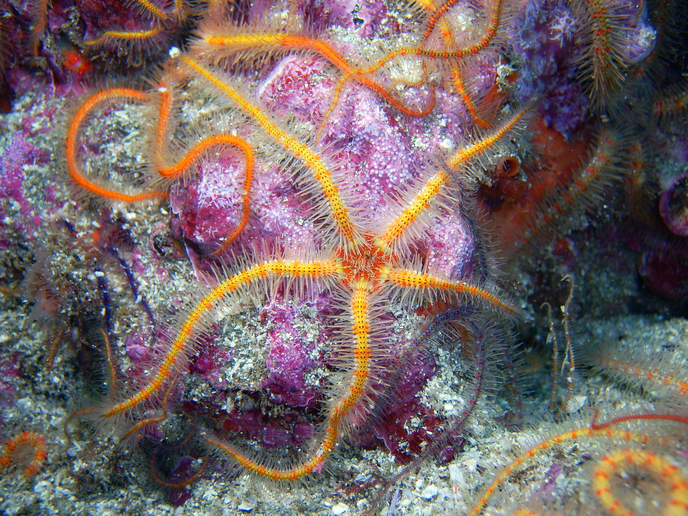Genome study reveals how brittle stars adapted to the extremes of deep-sea life
To get a taste of the strangest forms of life on Earth that defy explanation, there is no better place than the deep ocean. A whole array of invertebrates constantly strives to survive and thrive in an extreme marine environment where no sunlight penetrates, facing freezing temperatures and crushing hydrostatic pressure. “The deep ocean floor is the least explored ecosystem on the planet, even though it covers more than two thirds of the Earth’s surface. Understanding how this mysterious, alien world of the deep sea adapts to such an extreme environment is a major evolutionary puzzle,” notes Alexandra Weber, coordinator of the EU-funded DEEPADAPT(opens in new window) project that received funding under the Marie Skłodowska-Curie Actions programme. “Surprisingly, little is known about the molecular mechanisms underlying animal adaptation to the deep sea. Which and how many genes are involved in adaptation? What is the extent of convergent evolution across distantly related taxa?” asks Weber.
The challenge of studying deep-sea creatures
The Marie-Curie fellow specifically focused on brittle stars, which belong to the class Ophiuroidea(opens in new window). This elegant and beautiful group of marine invertebrates is ubiquitous throughout the deep sea, coming in a variety of shapes, sizes and colours. They are found throughout a wide diversity of habitats in the deep sea, and where they occur, they are often present in abundance, highlighting their strong adaptive abilities. But despite being dominant denizens in the deep sea, how can researchers study these organisms? “Any observational or experimental study on deep sea at a depth of 4 000 m is fraught with difficulties. When deep-sea organisms are brought to the surface, they do not survive the change in pressure and temperature,” explains Weber. Specimens derived from museum collections provided a route around this barrier, enabling genome studies that allowed thorough DNA analyses of the brittle stars.
New insight into the evolutionary genomics of brittle stars
DEEPADAPT was largely dedicated to deciphering the molecular mechanisms of brittle star adaptation to the deep sea. To study how distantly related brittle star families independently evolved similar traits, Weber examined the molecular evolution of around 400 genes derived from 700 brittle star species. Results showed that protein biogenesis (including protein folding and translation) is a key mechanism that enables adaptation to the deep sea. A whole-genome sequencing(opens in new window) analysis on 80 brittle star species revealed clues about the environmental, biological and genomic factors that affect genome size. In particular, Weber found that the life-history traits of deep-sea species, such as their high longevity and low metabolism, largely contribute to increased genome sizes. Furthermore, the researcher uncovered that genome size is mediated by changes in the repeated sequences that occur in multiple copies throughout the genome. Ultimately, Weber performed a whole-genome sequencing analysis on 120 abyssal brittle stars from a species called Ophiosphalma armigerum to determine how genes affect their local adaptation. These specimens were derived from different deep-sea regions worldwide and 2 500–4 000 m depths. DEEPADAPT uncovered signatures of reproductive isolation in morphologically identical brittle stars belonging to different species derived from the same deep-sea region but from different depths. Furthermore, the study revealed that closely related species showed signatures of hybridisation, suggesting that reproductive isolation mechanisms are postzygotic, meaning that these mechanisms happen after sperm and egg fusion. “Project results have important implications for evolutionary biology. Furthermore, they can throw light on how the variety of animal life in the deep sea could cope with climate change,” Weber concludes.







